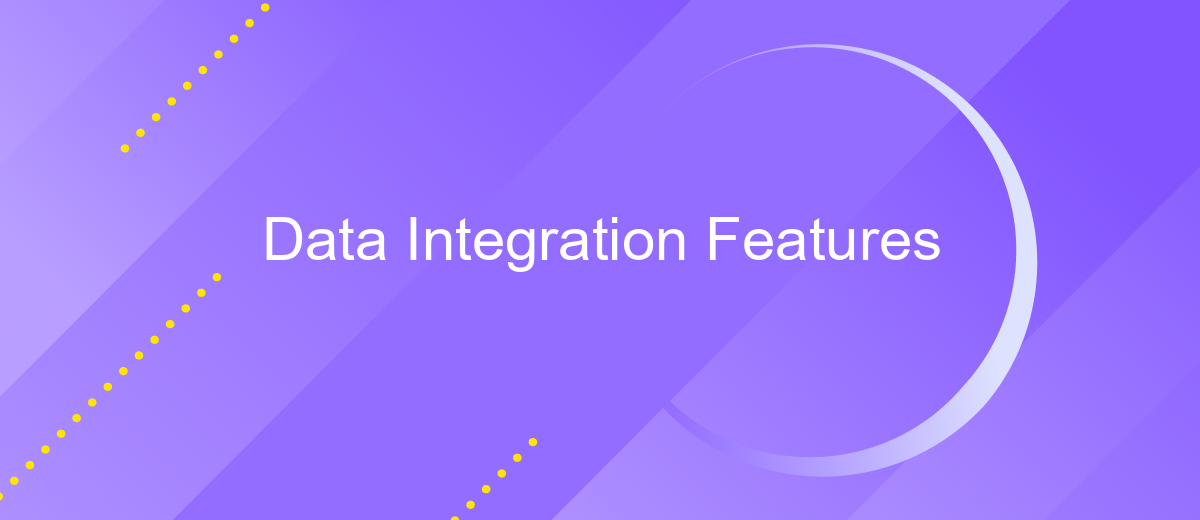Data Integration Features
Data integration is a crucial process in modern enterprises, enabling seamless connectivity and coherence across various data sources. This article explores the key features of data integration, including real-time data synchronization, data transformation, and unified data access. Understanding these features can help organizations enhance data accuracy, streamline operations, and make informed decisions based on comprehensive data insights.
Introduction
Data integration is a critical component in modern business operations, enabling seamless connectivity between disparate systems and ensuring data consistency across platforms. As organizations increasingly rely on various software applications to manage their operations, the need for effective data integration solutions has never been more pronounced.
- Streamlined data flow between systems
- Enhanced data accuracy and consistency
- Improved decision-making capabilities
- Reduced manual data entry and associated errors
- Scalable integration solutions to meet growing business needs
Tools like ApiX-Drive simplify the integration process by providing a user-friendly interface and robust connectivity options. By leveraging such platforms, businesses can automate data transfer, synchronize information in real-time, and maintain a unified view of their operations. This not only boosts efficiency but also empowers organizations to make informed decisions based on comprehensive and accurate data insights.
Key Features

Data integration is essential for unifying information from various sources, ensuring seamless data flow and consistency. One key feature is real-time data synchronization, which allows for immediate updates across systems, minimizing the risk of data discrepancies. Another important aspect is data transformation, enabling the conversion of data into a consistent format suitable for analysis and reporting. This ensures that data from different sources can be effectively combined and utilized.
Additionally, automation capabilities play a crucial role in data integration. Tools like ApiX-Drive facilitate the automation of data transfer processes, reducing manual effort and the potential for errors. ApiX-Drive supports a wide range of integrations, allowing businesses to connect various applications and services effortlessly. Furthermore, robust security measures, such as encryption and access controls, are vital to protect sensitive data during integration. These features collectively enhance the efficiency, accuracy, and security of data integration processes.
Benefits

Data integration offers numerous benefits that streamline business operations and enhance decision-making processes. By consolidating data from various sources, organizations can achieve a holistic view of their operations and customer interactions.
- Improved Data Accuracy: Integrating data from multiple sources reduces inconsistencies and errors, ensuring that decisions are based on reliable information.
- Enhanced Efficiency: Automated data integration processes save time and resources by eliminating the need for manual data entry and reducing the risk of human error.
- Better Decision Making: With access to comprehensive and up-to-date data, businesses can make informed decisions quickly and effectively.
- Scalability: Data integration solutions like ApiX-Drive allow businesses to easily scale their operations by connecting new data sources as they grow.
- Cost Savings: By streamlining data processes, organizations can reduce operational costs and allocate resources more efficiently.
Incorporating a service like ApiX-Drive can further simplify the integration process by providing user-friendly tools and automation capabilities. This enables businesses to focus on their core activities while ensuring seamless data flow across various platforms.
Implementation Considerations

When implementing data integration solutions, it is crucial to consider various factors to ensure seamless and efficient operations. A clear understanding of the data sources, the type of data being integrated, and the desired outcomes is essential for a successful integration project.
One of the primary considerations is the selection of appropriate tools and services for data integration. Tools like ApiX-Drive can facilitate the automation of data transfer between different systems, reducing manual effort and minimizing errors. Additionally, it is important to ensure that the chosen tools are compatible with the existing infrastructure and can handle the volume and complexity of the data.
- Identify data sources and types of data.
- Select appropriate integration tools and services.
- Ensure compatibility with existing infrastructure.
- Plan for data security and compliance.
- Monitor and maintain the integration process.
Moreover, planning for data security and compliance is paramount. Implementing robust security measures and ensuring compliance with relevant regulations will protect sensitive data and maintain trust. Regular monitoring and maintenance of the integration process will help in identifying and addressing any issues promptly, ensuring continuous and smooth data flow.


Best Practices
To ensure successful data integration, it is essential to start with a clear understanding of your data sources and the specific requirements of your integration project. Begin by mapping out your data flows and identifying potential challenges. Utilize tools like ApiX-Drive to automate and streamline the integration process, reducing the risk of errors and saving valuable time. ApiX-Drive offers a user-friendly interface that allows you to connect various applications and services without the need for extensive coding knowledge.
Regular monitoring and maintenance are crucial to maintaining the integrity of your data integrations. Establish a routine for checking data consistency and accuracy, and be prepared to make adjustments as necessary. Additionally, ensure that your integrations are scalable to accommodate future growth and changes in your data sources. By adhering to these best practices, you can achieve a seamless and efficient data integration process that supports your business objectives and enhances overall data management.
FAQ
What is data integration?
Why is data integration important for businesses?
What are some common challenges in data integration?
How can automation tools help with data integration?
What features should I look for in a data integration tool?
Time is the most valuable resource in today's business realities. By eliminating the routine from work processes, you will get more opportunities to implement the most daring plans and ideas. Choose – you can continue to waste time, money and nerves on inefficient solutions, or you can use ApiX-Drive, automating work processes and achieving results with minimal investment of money, effort and human resources.

